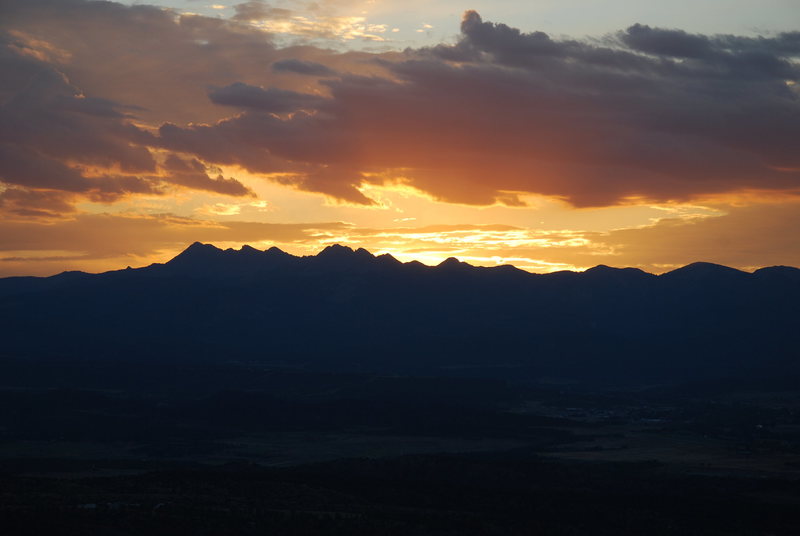Alpine Rock
Colorado
Description
This "area" is for alpine rock climbing in Colorado. Alpine is probably the true "Mountain" Project terrain. These routes truly lie in the mountains. This is the terrain of the alpinist, the all-arounder. Generally here, you must be comfortable in whatever the environment will throw at you.
Alpine is the home of the marmots and pikas in the warmer months. In the colder months, this is the land of the frozen. Scattered here is the terrain in which weather, exposure, season, loose rock, ice, snow, route-finding, lightning, precipitation, and altitude can dramatically affect one's experience. All these climbs involve heights of at least 8,000 feet and are above treeline. With these factors comes increased risks but potential for increased rewards and memories that can last a lifetime.
Getting There
These climbs cover the state from the Crestones, the Sangre de Cristos, the Mosquito Range, the Collegiates, the Sawatch, the San Juans, the Gores, the Front Range, the Elks, the Indian Peaks, the Mummy Range, the Never Summer Mountains, Rocky Mountain National Park or whatever range you wish to include. Look high and you will find them. You will drive but then you will hike, since most all of these will require some extended approaches. Some will require overnight trips. Nearly all will have season considerations for the majority of climbers.
Bats - conservation
See a bat on a route, give a shout. Bats have been reported as high as 12,500'. Climbers for Bat Conservation is working with climbers to understand bat ecology and why bats choose certain cracks and flakes. If you see bats, and want to tell them, here is their email (climbersforbats@colostate.edu) and their website ( climbersforbats.colostate.edu/).
Climbers for Bat Conservation is a collaboration between climbers, bat biologists, and land managers to understand where bats roost and where large populations may reside. They are interested in finding bats because a new disease, called white-nose syndrome ( whitenosesyndrome.org/), has killed millions of bats in North America. This collaboration has identified bat roosts throughout the U.S., and as far away as Norway and Bulgaria. CBC was developed by biologists who climb and they are advocates for climbing access and bat conservation. If you see bats while climbing, please let them know by emailing them at climbersforbats@colostate.edu, or visiting their website to learn more ( climbersforbats.colostate.edu/).
Rob Schorr
Zoologist, Colorado Natural Heritage Program ( sites.warnercnr.colostate.e…)
Director, Climbers for Bat Conservation
Robert.schorr@colostate.edu
![Hi there, guys!]()
[Hide Photo] Hi there, guys!
![I was going to take a shot of Ken on the summit, he said, "you might want to take a shot of what's behind you." These guys were right on top of us.]()
[Hide Photo] I was going to take a shot of Ken on the summit, he said, "you might want to take a shot of what's behind you." These guys were right on top of us.
![Grazing rights.]()
[Hide Photo] Grazing rights.
![One of a herd of mountain goats just above the Lenawee Mountain lift at A-Basin.]()
[Hide Photo] One of a herd of mountain goats just above the Lenawee Mountain lift at A-Basin.













The Dungeon, NM
1) Tenmile Range –
----all currently listed areas
----??
----Pacific Peak
----Quandary Peak
2) Sawatch Range (needs a new page)
----Frasco's Toe
----Grizzly Peak
----Holy Cross Wilderness
--------Mount of the Holy Cross
----La Plata
3) Elk Mountains (needs a new page)
----Capitol Peak
----Chimneys of Treasure
----Maroon Bells
----Pyramid Peak
4) San Juans
----All currently listed areas
----Babcock Peak
----Rolling Mountain
----All peaks from Northern San Juans (Sneffels Range)
5) Sangre de Cristo Range (needs a new page)
----Blanca Peak
----The Crestones
----Ellingwood Point
----Fluted Peak
----Little Bear Peak
----Tijeras Peak
6) Gore Mountain Range
----All currently listed areas
----Buffalo Mountain – move to the Buffalo Mtn page already listed under Gore
These are the Front Range areas:
7) Indian Peaks -as is
8) Mt. Blue Sky (formerly Mt. Evans)
----All currently listed areas
----Sawtooth Ridge, Mt. Bierstadt/Evans combo
9) RMNP - Rock –as is
10) Torrey's Peak – doesn’t really fit in other areas
11) The Citadel – doesn’t really fit in other areas
12-100) Other areas/ranges as they get posted, e.g. (Pikes Peak, etc.) Jul 22, 2016